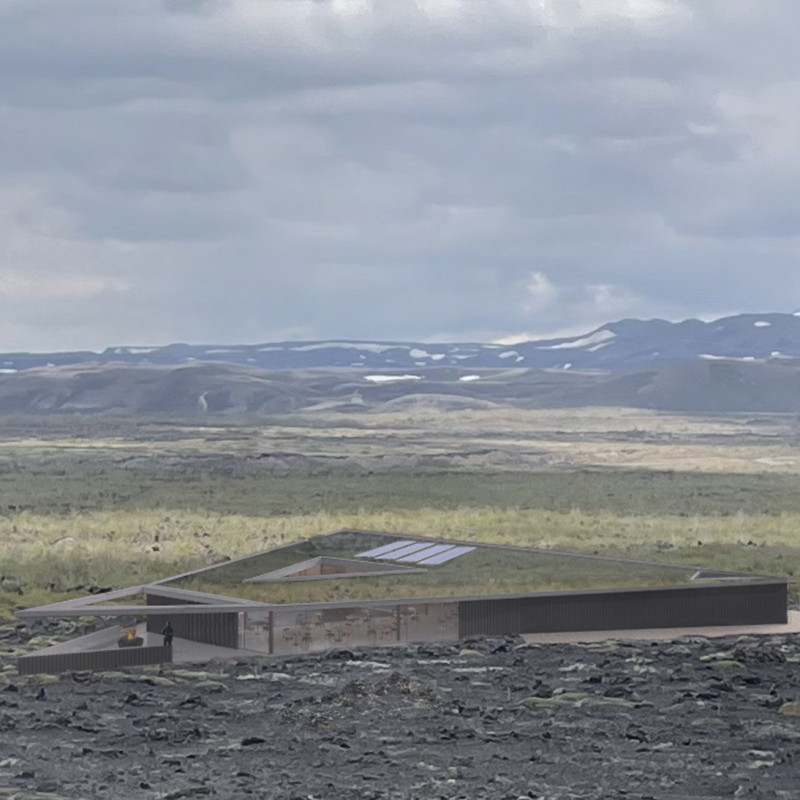5 key facts about this project
The visitor center near Hverfjall Crater in Iceland serves as a focal point for those exploring the unique volcanic landscape. Its design is rooted in the natural features surrounding it, capturing the essence of being part of this rugged environment. The concept mimics the experience of ascending a volcano, guiding visitors through spaces that encourage reflection and interaction with nature.
Design Concept
The building presents a journey through its structure, starting with a strong visual presence that rises from the surrounding ground. Visitors are welcomed by wooden walls that guide them toward the entrance. A glass opening at the reception area creates a transition between indoors and outdoors, allowing natural light to flow in and emphasizing the connection to the landscape outside.
Material Integration
Local materials are key to the building’s design, providing unity with the environment. Dark wood is used for the walls, enhancing the relationship between the structure and the volcanic terrain. Exposed concrete elements give a sense of shelter and durability, connecting it to Icelandic architectural traditions. The green roof blends with the landscape, making the building feel more integrated into its setting.
Spatial Experience
Inside, the spaces are designed to be warm and inviting, thanks to the use of wood panels and polished concrete flooring. A notable feature in the cafeteria includes volcanic rock paired with a reflecting water mirror, encouraging a constant relationship between the interior and the outside world. Windows and openings throughout the building frame views of the volcanic landscape, keeping visitors aware of the dramatic scenery around them.
Sustainable Strategies
Sustainability plays a significant role in the project’s design. Solar panels capture sunlight to generate energy efficiently. There are systems in place for managing rainwater and treating wastewater, which promotes responsible water use. Natural ventilation is facilitated through sliding windows, allowing fresh air to circulate, while the thermal mass found in concrete and wood helps maintain a comfortable temperature inside.
A central opening allows warm air to escape, contributing to a pleasant indoor climate. This combination of design elements enhances the connection between the visitor center and the dramatic landscape, offering an engaging experience for all who enter.






















































